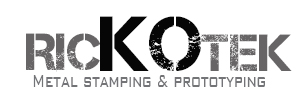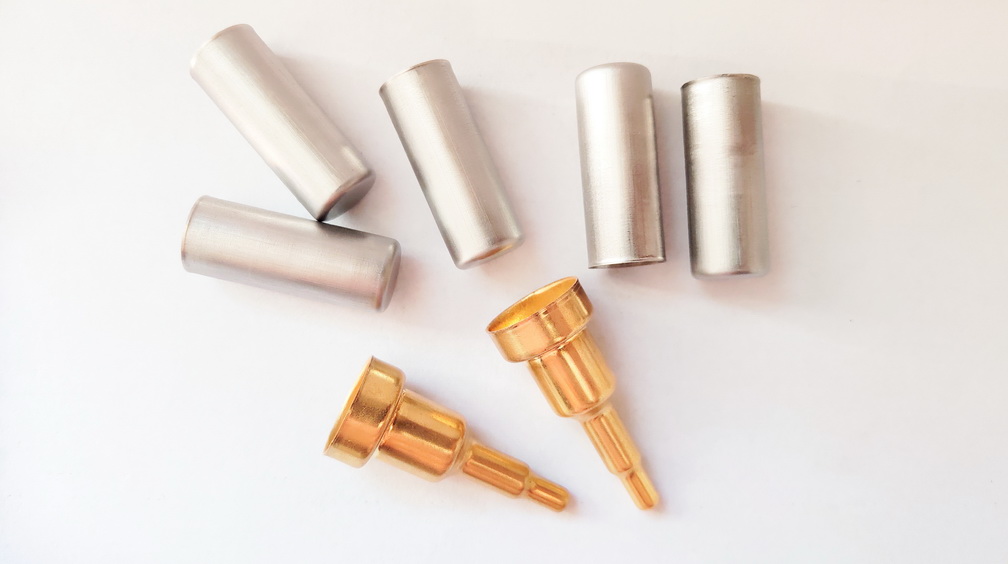There are several different ways that metal is formed into specific shapes so that they can be used as parts for machines, devices, structures, and more. One of the more popular is called deep draw metal stamping. You will find this method being used around the world, but what is deep drawing, and how does it work?
What is Deep Draw Stamping?
Deep draw metal stamping manufacturers start with metal dies, which are used to create sheets of metal and form them into specific shapes. The deep drawing process occurs when the item which is created has a depth that is either equal to or greater than its radius. When this happens, it is called deep drawing.
While it is true that deep drawing does stamp the metal, it should not be confused with traditional metal stamping. The difference is that metal stamping uses a single machine to create a whole metal part from the blank.
The deep draw forming may use different machines or processes to create metal parts or products that are deeper than traditional metal stamping can accomplish.
How It Works
The deep draw process begins with metal blanks. For the creation of a single part or product, a single blank is used to create the deeper shapes required.
During the metal drawing process, you may see the metal blanks lined up in a row, such as on a reel, which is faster and more efficient than loading them one at a time. The metal drawing process then pushes each blank through a series of metal dies, which stamps the blank into a different shape.
Once the blank has passed through the requisite number of metal dies, the final product will have the desired shape. Any excess metal is collected and re-melted or disposed of properly.
Industrial Applications
Although simple in concept, deep draw metal stamping does have limitations, which is why some industries do not use this process,
because certain parts or products crafted from metal blanks using deep draw stamping may not hold up to specific applications.
That is changing in some ways as new deep draw metal forming processes have been created to address such issues. It means that these unconventional methods are expanding the use of this stamping process to include such diverse industries areas such as the following;
- Aquadrawing, hydroforming, and hydro-mechanical deep drawing
- Hydraulic deep drawing, Guerin and Marform process
While most manufacturers can benefit from the deep draw forming, the method itself is mostly used for small components. You’ll find this process used to create assembly housings, electronic relays, and solenoids.
However, many different products can be created using this process, including cookware, kitchen sinks, and cans made from aluminum.
Aluminum is not the only deep drawing sheet metal that can be used in the deep draw process, and many other metals can be used as well, including some of the following;
- Brass, Bronze, and Copper
- Invar, Iron, and Kovar
- Molybdenum, Nickel, and Silver
- Stainless Steel, Cold-Rolled Steel, and Tungsten
Pros
There are several benefits of the deep draw stamping process, which has helped to expand the production of metal parts for many different uses.
High Volume: Once the tooling and dies have been set, the deep draw metal stamping manufacturers can produce a high volume of metal parts quickly and efficiently. There is very little downtime as the process can continue as long as metal blanks are fed into the system.
Also, there is generally little maintenance as well. All this contributes to why deep draw metal stamping is so fashionable in that once the process gets going, it can produce a large number of parts or products in a short time.
Cost Efficiency: In addition to the high volume of metal parts or products produced, the construction cost of the tools themselves is considerably lower compared to other processes such as progressive metal stamping. That means in terms of cost-efficiency, and the deep draw metal forming process is one of the best available.
Cylindrical Products: Perhaps the most familiar example of the deep draw metal process is the production of aluminum cans for soda pop, beer, and other beverages.
This method excels at creating products in a cylindrical shape because with a single draw ratio, the metal blank can be drawn into a circular object with a three-dimensional shape.
Besides, this process works well for products or parts that require considerable strength, with a minimal amount of metal being used. It’s also perfect for creating unusual shapes that might not be possible using other techniques in manufacturing.
Cons
While the more complex the part or product needed, the less cost-efficient the deep draw stamping process becomes the real issue is with the number of products that need to be created. Deep draw metal forming is ideal for creating a large number of parts or products. For those who only need a relative few, then this process is not as efficient compared to other stamping techniques.
This is because the setup time is considerable, especially when considering the expertise and precision needed to set up the machines to do the job. That is why when manufacturing only a few items; deep drawn stamping is not the best solution.
It is also true that depending on the shape of the part or product needed. Deep draw metal forming may not be the right application.
Stresses from compression or radial drawing may result in fracturing, cracking, or wrinkling of the metal. While some of these are overcome with new technology, there are still limitations in what this process can achieve.
For manufacturers, deep draw metal stamping is ideal for creating parts that have no seems, the fast production of parts or products, especially those that are complex in their shape. And, they require a minimum number of technicians to ensure that the drawing process proceeds normally.


I was searching for something, suddenly I found this blog, I clicked this informative blog title and read this full information. I liked this blog. Because you are sharing complete information about “Pros and Cons of Deep Draw Stamping”, who useful for any customer.
Thanks for sharing